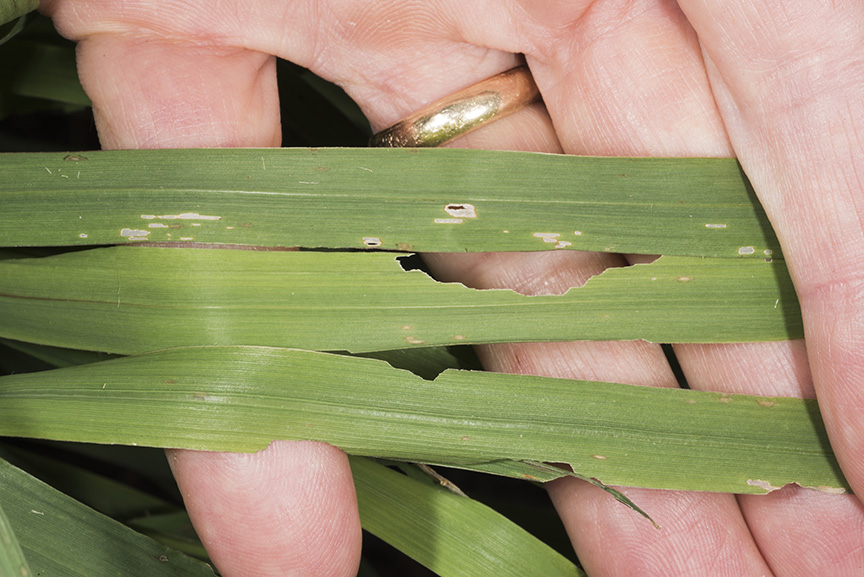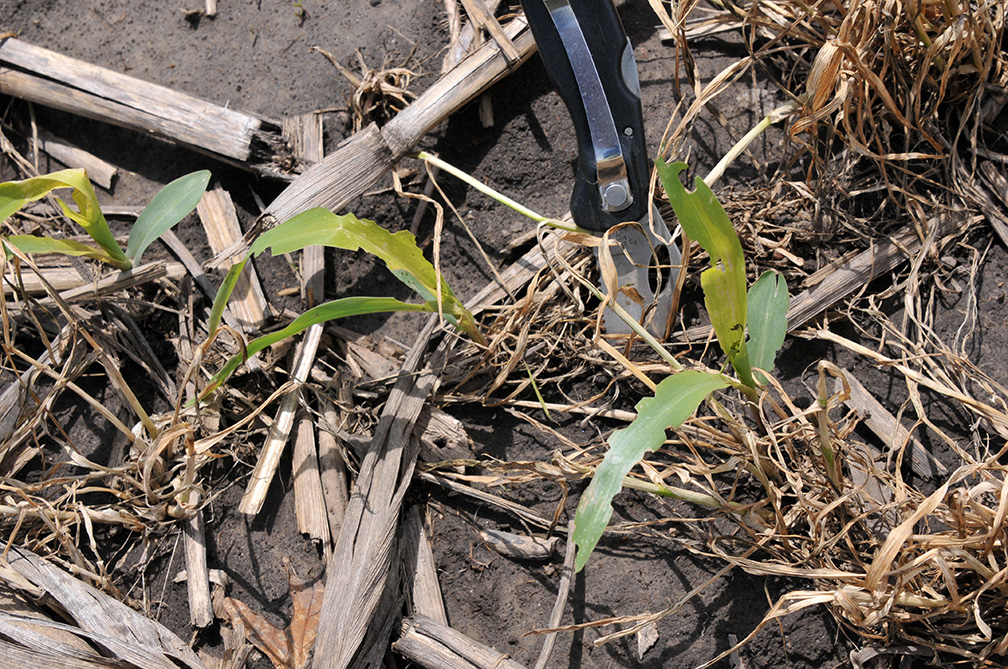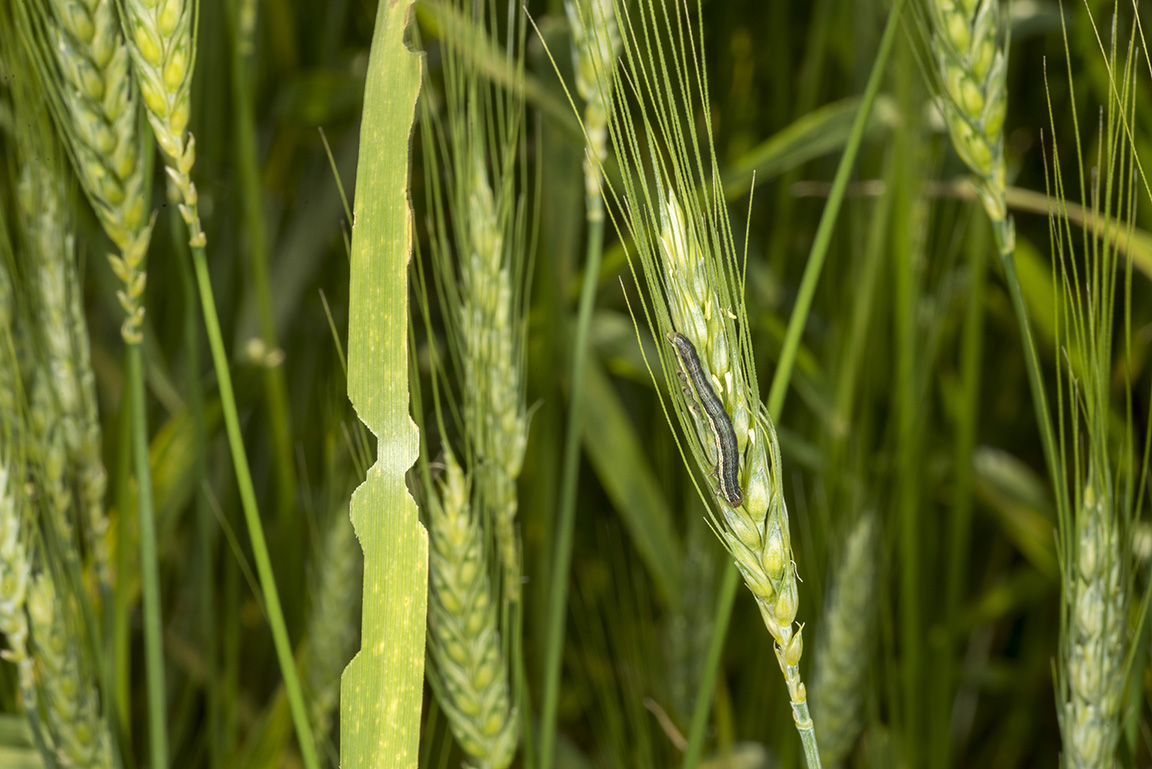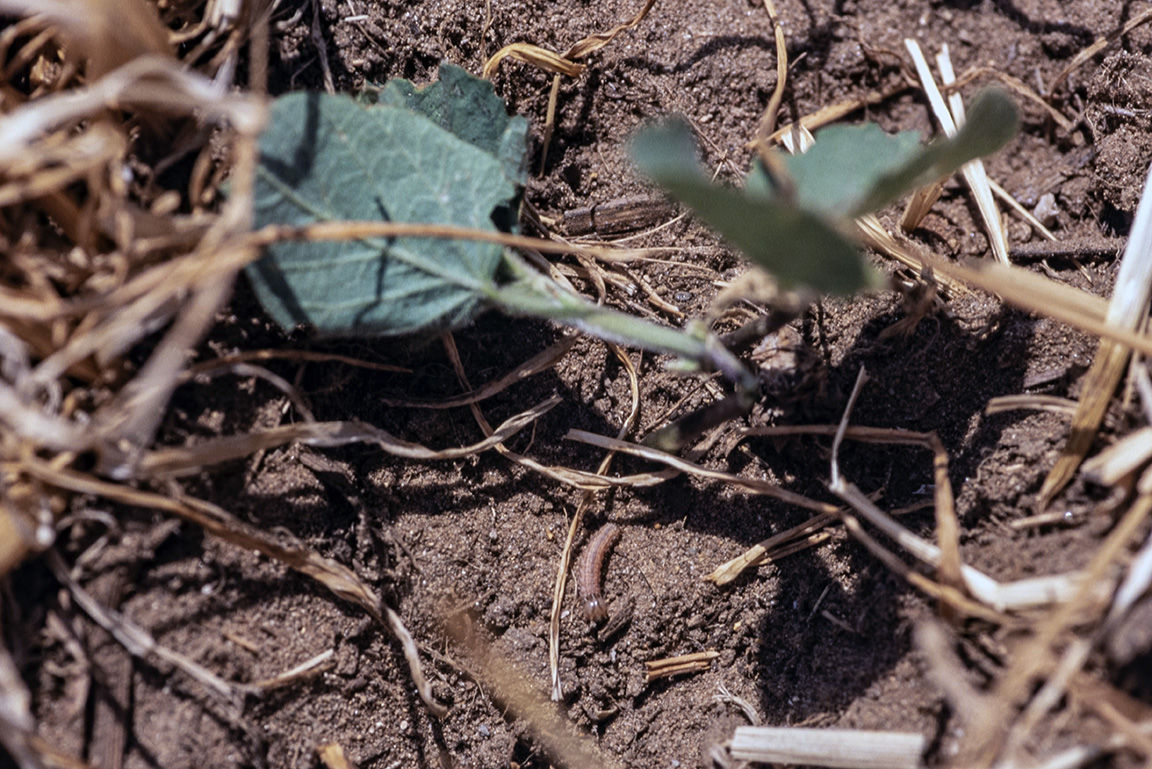Armyworm moth captures have varied throughout the state for the last eight weeks (see “Armyworm Pheromone Trap Report”). As I observed this week in Tippecanoe County, when larvae are small, their damage is negligible and easily overlooked. On the other hand, as some local producer’s found, when they are large, they leave no leaf tissue on grasses in hay! Now, and for the next week or so, high-risk crops should be monitored. Moths prefer to lay their eggs on dense grassy vegetation (e.g., wheat, grass hay, and grass cover crops). Larval development should now have advanced to the point that fields should be assessed for feeding damage.

Forage grass with early armyworm damage: “windowpaning” from newly hatched larvae, marginal leaf notching from half-inch larvae. (Photo Credit: John Obermeyer)
Corn – Corn that has been no-tilled into, or growing adjacent to, a grass cover crop (especially cereal rye) should be inspected immediately for armyworm feeding. Hatched larvae will move from the dying grasses to emerging/emerged corn. Armyworm feeding, done at night, gives corn a ragged appearance, with feeding extending from the leaf margin toward the midrib. When larvae are numerous and/or large, damage may be so extensive that most of the plant, except for the midrib and stalk, is consumed. A highly damaged plant may recover if the growing point has not been destroyed. If more than 50% of the plants show armyworm feeding and live larvae less than 1-1/4 inches long are numerous in the field, control may be necessary. Larvae greater than 1-1/4 inches consume a large amount of leaf tissue and are more difficult to control. If armyworm are detected migrating from border areas or waterways within fields, spot treatments in these areas are possible if the problem is identified early enough. Don’t rely on Bt-corn for protection, as traits won’t stop the armyworm assault.
Wheat & Grass Pasture – Examine plants in different areas of a field, especially where plant growth is dense. Look for flag leaf feeding, clipped heads, and armyworm droppings on the ground. Shake the plants and count the number of armyworm larvae on the ground and under plant debris. On sunny days, the armyworm will take shelter under crop residue or soil clods. If counts average approximately 5 or more per linear foot of row, the worms are less than 1-1/4 inches long, and leaf feeding is evident, control may be justified. If larvae are present and they are destroying the flag leaves or the heads, treat immediately.
Soybean, After Cover Crop Termination – Armyworm primarily feed on grasses. As seen in the past, they will feed on no-tilled soybean into a cereal rye cover crop. Weeks ago, armyworm moths were attracted to laying eggs on grasses, in which the hatched larvae were quite content on feeding. Then a burn-down herbicide was applied before/at planting and the armyworm were eventually left with no food except for the emerging soybean seedlings. To satisfy their hunger, armyworm will feed on the soybean, but are unable to properly digest this legume for nourishment. Depending on the size of the larvae, and where they feed on the plant, some soybean seedlings may be killed, Obviously, a rescue insecticide treatment is not needed, as the armyworm slowly starve to death and the tattered plants will give way to undamaged leaves.





